Nature in Ryde Cemetery – March 2008
On Saturday 8th March Maisie and Carol met up in the Cemetery to investigate what was happening with the plants, birds and animals there. Here is Maisie’s report:
It was a very cold day with a north-easterly wind blowing but Carol and I decided to walk around the Cemetery to see if we could find anything new to report.
The Primroses that have been in flower since early January are now at their very best and all over the Cemetery there are great carpets of the yellow flowers.
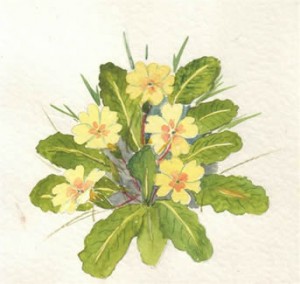
Primrose
Also there are Daffodils, Hyacinths and Crocuses growing on graves.
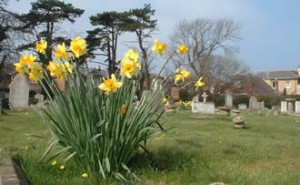
Daffodils
In the New part of the Cemetery we discovered that there were about 50 to 60 mauve crocuses growing “en masse”.

Crocus
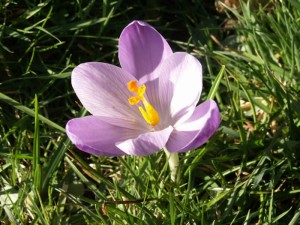
Crocus
We found a Skimmia bush in flower, this is a cultivated bush and at some time was probably planted by a relative of a dear one buried there.
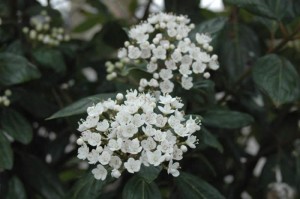
Skimmia
We also found a “Pussy Willow” with its furry buds; all the trees are in bud and waiting for the day when they will burst into life.
Wildflowers are still not very abundant but we did find Ivy leafed Toadflax, Nipplewort, Smooth hawk’s beard and even a Forget-me-not growing against a kerb stone.
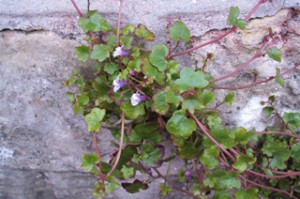
The long thin trailing stems are reddish with fleshy lobed leaves similar shaped to ivy leaves. The long stemmed flowers have two lilac or violet lips with two central yellow patches and a short spur.
The plant grows in nooks and crannies, old walls, rocky places and pavements generally on vertical surfaces in full or partial shade.
Nipplewort
Lapsana communis (Asteraceae)
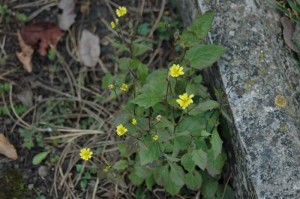
This common plant is easily recognised by its branched, slender stems bearing slim buds and many small dandelion type flowers. It has broad, slightly toothed leaves with dark tips.
Grows in bare and grassy places, lawn, pastures, road verges, open woodland and cemeteries.
Smooth Hawk’s Beard
Crepis capillaris (Asteraceae)
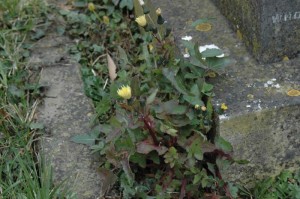
A Dandelion-like plant with many branched flowering stems. It has small flower heads with the outer florets tinged red underneath, below are two sets of green bracts – one long and one short. The upper leaves clasp the stem the lower leaves are lobed.
Grows in grassy and rocky places, pasture, roadsides.
Prefers chalky soil.
Forget-me-Not
Myosotis scorpioides (Boraginaceae)
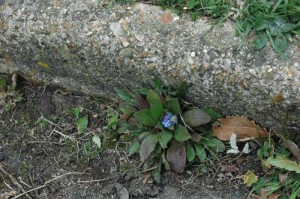
Perennial from creeping rootstock runners, has stout smooth stem and slender spoon-shaped leaves that are light green. The flowers about a quarter of an inch across, blue with yellow centres. They are grouped in cymes, at first short but as the buds open in succession the stalk lengthens.
Likes moisture and often grows at streamsides.
There were not too many birds to be seen, we could hear them twittering in the trees and bushes but they mainly stayed out of sight. However we did see Blackbirds, Magpies, Wood Pigeons and while walking along a path we did disturb a flock of small birds, they could have been Chaffinches but they flew away before we could really take note.
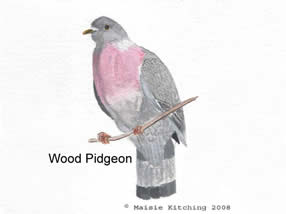
Wood Pigeon
We did find some things in the Cemetery that we would have preferred not to. Dog mess and also fourteen beer bottles all lying around in a very small area! It was obvious that the headstones had been used to pry off the metal tops, which were also lying around. These we picked them up and put them in the nearest rubbish bin. It would be nice if people could respect this beautiful area, instead of using it to dump rubbish and ignore what their dogs are doing?
If you would like to help with our Nature Studies, and particularly if you have any expertise in this area, please get in touch. Neither Carol nor I have the knowledge of “David Bellamy” and we have to rely on reference books to try and identify many of the plants and birds we see. So if you have knowledge of the wildlife, flowers, birds and animals and can give us some guidance we would welcome you to our team.
Maisie Kitching
8 March 2008

